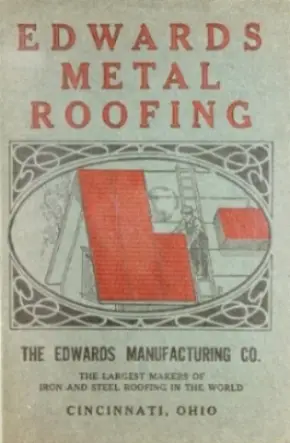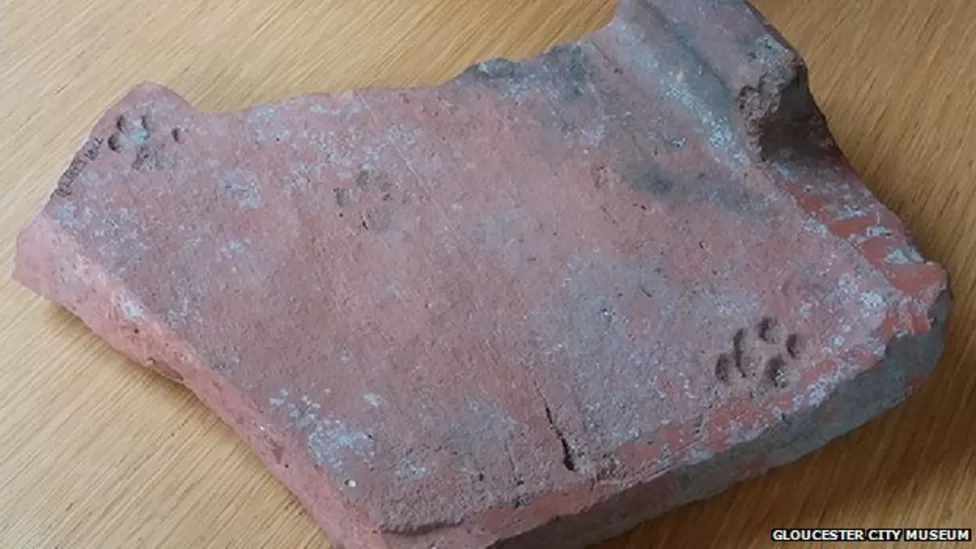Historic Roofing: Guide to Online References & Documents
By Jack Gray, Roof Online Editor • Last updated March 16, 2024


About This Page
Our goal with this reference page is to put together the most helpful list of historic roofing reference materials that we can.
We’d appreciate it if anyone who knows of a good resource that we don’t have listed would contact us to let us know.
We’re mainly covering historic roofing sources that are available online, but we’re open to good historic roofing books if they can be ordered online.
Introduction
The study of historic roofing materials and techniques not only gives us a window into the past, it also places modern-day construction into a broader context, helping us to better understand why things are done the way they are. By exploring historic roofing, we can gain insights into the evolution of architecture, appreciate the ingenuity of our ancestors, and preserve the integrity of our cultural heritage.

Key Points:
Understanding Architectural Evolution: Studying historic roofing materials and techniques allows us to trace the progression of architectural styles and engineering innovations throughout history.
Looking at how roofing practices have changed over time provides some interesting insights into the development of different civilizations, their construction methods, and how the materials used reflect the resources and technology available according to location and time period.
By examining historic roofing, we can appreciate the intricacies of traditional craftsmanship and recognize the unique characteristics that have come to define each era.
Preserving Cultural Heritage: Historic roofing can play a role in preserving our cultural heritage. Historic buildings offer a tangible connection to the past, allowing us to understand and appreciate the lives and experiences of those who came before us. Maintaining and recreating the original roofs on heritage buildings goes a long way toward making that connection more authentic.
By preserving the knowledge of historic roofing materials and techniques, we can ensure that future generations have the opportunity to experience these remarkable structures firsthand.
Sustainability: Historic roofing materials and techniques often demonstrate a remarkable level of sustainability and eco-friendliness. The use of locally-sourced materials and the impressive ingenuity of traditional building techniques can offer valuable lessons for modern construction practices.
A significant majority of roofing materials installed in North America today require the use of one petroleum derivative or another; this was not the case before the 20th century.
By studying historic roofing, we can potentially uncover sustainable solutions for contemporary roofing projects.
Craftsmanship: There is a certain level of artistry and craftsmanship present in historic roofing that cannot be replicated by modern, mass-produced materials.
The attention to detail, the intricacies of design, and the skillful use of materials all contribute to the attractive qualities of traditional roofing. By learning about these techniques, we can foster an appreciation for the skill and dedication of the roofers of the past.
Restoration and Preservation: The roofs on historic buildings age and need to be replaced periodically, just like all roofs do (although maybe not as often, because of the durability of traditional materials).
For the sake of proper restoration and preservation, knowledge of historic roofing materials and techniques is essential for those tasked with maintaining and repairing these structures.
By understanding the original construction methods and materials, restorers can ensure that their work stays true to the building’s history and maintains its architectural integrity.
Historic Roofing as an Inspiration for Modern Design: Historic roofing can serve as an inspiration for modern architects and designers. By studying historic roofing, we can draw upon the unique aesthetics and functional solutions of the past to inform and enrich contemporary designs.
This fusion of old and new can result in innovative and distinct architectural styles that respect tradition while embracing modernity.
(Tangential Yet Interesting Digression): A lot of common last names come from the various specific subcategories of the roofing trade as they existed in the late Middle Ages. According to the Los Angeles Times:
“Tile making is an old builder’s craft, and the surnames of Tyler and Tylemann probably come from those who made or laid tile.
Roofing provides us with several surnames–Reedman, Slater, Hillier, Hiller, Ledbetter, Pitcher and Plumer. A helliar was a roofer, and the name probably comes from an Old English word helian , which indicates these men did their work with either slate or tile.
Ledbetter, and its many spellings, refers to those who beat lead into sheets for the roofers to use. Pitchers were roofers who used pitch on the job, while Plumers worked with heavy metal and probably were the ones who put roofs on churches and castles.
Slater refers to slate–the material used in roofing–and the workers, while Reedman/Redman comes from an Old English word redyn , meaning to thatch with reeds.”
(I can’t believe they forgot to include “Thatcher” in that list!)
External Sources & References for Information on Historic Roofing
1. Book Recommendation: 5000 Years of Tiles by Hans Van Lemmen.
2. Book Recommendation: Practical Building Conservation: Roofing by Historic England.
3. Book Recommendation: Historic and Obsolete Roofing Tile – Preserving the History of Roofing Tiles by Vincent H. Hobson and Melvin Mann. Described as “(t)he only reference book ever compiled addressing the identification of old, historic and obsolete roofing tiles.”
4. General: “Roofing for Historic Buildings” by Sarah M. Sweetser is a great starting point for anyone responsible for the care, maintenance, or repair of a building with an historic roof which must be preserved. This article is on the US National Park Service’s Technical Preservation Services site.
5. General: The Roofing Handbook for Historic Buildings is a fantastic resource produced by the Historic Preservation Education Foundation in 1999. This book can be viewed online as a 465-page PDF document.
6. General: “Early 20th-Century Building Materials: Siding and Roofing” from the US Forest Service.
7. General: “NPS Reading List: Twentieth Century Building Materials: 1900-1950“. A comprehensive (if possibly outdated) bibliography on the topic. Many roofing references. On the National Park Service’s “History eLibrary” website.
8. Asphalt Shingles: For a brief history of early asphalt shingles, see “Roofing 101 – The Basics of Asphalt Used in Roofing” on the Asphalt Magazine website.
9. Clay Tile: Not a bad read, even if the article is old: “A Brief History of Roofing Tile Manufacture and Use“, from the website of the National Building Arts Center.
10. Clay Tile: For a description of the clay tile manufacturing process from 1911, see “Mound City Roofing Tile” on the website of the National Building Arts Center.
11. Coal Tar Pitch Roofing: Barrett’s Handbook on Roofing and Waterproofing for Architects, Engineers, and Builders – Barrett Manufacturing Co. – (published in 1896, 48 pages).
12. Copper Roofing: Copper Flashings – A Handbook of Data on the Use of Copper As a Flashing Material with Standard Details of Construction and Specifications for Sheet-Copper Work – Copper and Brass Research Association – (published in 1925, 66 pages).
13. Copper Roofing: Copper Roofings – A Manual – Information for Architects and Roofing Contractors – Copper and Brass Research Association – (published in 1925, 25 pages).
14. Metal Roofing: “Metals in America’s Historic Buildings – Uses and Preservation Treatments“ provides extensive coverage of the subject – 174 pages – and is well-researched. From the National Park Service’s Technical Preservation Services. Covers metals from aluminum to zinc. See Part One. See Part Two. See Part Three. See Part Four.
15. Slate Roofing: Slate Roofs – National Slate Association – (published in 1926, 83 pages).
16. Slate Roofing: The Story of Slate – Charles H. Davis – Davis Slate & Manufacturing Company – (published in 1923, 4 pages).
17. Terra-Cotta: “The Preservation of Historic Glazed Architectural Terra-Cotta” is a good introduction to architectural terra-cotta, and also covers maintenance and repair techniques. Available on the US National Park Service’s Technical Preservation Services site.
18. Wood Shingles: If you have a few minutes, take a look at this video where traditional tools are used to produce wood shakes. It’s a pleasure to watch: “Making Roof Shingles With Hand Tools“.
19. Wood Shingles: “Fabricating and Installing Side-Lap Roof Shingles in Eastern Pennsylvania” by James Houston and John N. Fugelso, from 2008, is a terrific article, hugely informative. Available on the website of the Association for Preservation Technology International.